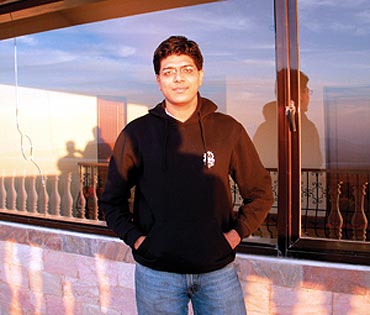Urmila Rao
So you wanted to be an engineer all your life but had no clue what you'd do. Urmila Rao of Careers 360 spoke to three young engineers and found out what they do at work every day.
Namrata Arora, 22
Designation: Member Technical Staff, Oracle, Bangalore
At Oracle Bangalore office, Namrata's day usually starts with checking mails and interacting with her team members at Bangalore and Redwood Shores, California. A 2010 pass-out of Delhi Technological University (erstwhile Delhi School of Engineering), this is her first job, routed through campus placement.
Coding is not just about software.
A software professional, Namrata works as a part of the team that develops Enterprise Manager, a set of systems management tools provided by Oracle Corporation for managing the Oracle environment.
In particular, she is into provisioning or cloning of 'middleware'. "Middleware sits in the middle of the application software and hardware, and provides building blocks of various software applications," she explains the technical jargon.
The sprightly youngster, a trek enthusiast, whose indulgence with IT software is equally strong, digs a little deeper. "Middleware enhances interoperability and is central to XML, SOAP, Web Services platforms," she explains.
Namrata's job involves coding, testing applications, fixing bugs and evaluating the performance of the application that's being developed. The goal is to design a customer-friendly application, the implementation of which should be free of all possible errors before it is released for use. Added to that challenge is deliverance of product in a stipulated time frame.
So did the college prepare her well for all possible experiences of real professional set-up?
"College offered fundamental base, giving partial exposure and enabling a good start," says Namrata. Otherwise, college studies can prepare for a few tasks and not all "which can be experienced only at the time of a real job," she concurs. "Both institutions have a totally different paradigm," Namrata maintains.
Having moved to Bangalore for the current assignment, the nature lover has already explored picturesque and historic Coorg, Mysore and Yercaud during her weekends.
The plans of another nature trail and trek is being 'coded', says Namrata, "the application of which will happen in coming months."
In the meantime, the adventurer who is gradually warming up to the fare of idlis and vadas over north Indian cuisine is happy unwinding by playing table pool shots during the weekdays. "College offers a base, gives exposure and enables a good start. But it can equip you only partially"
'Production planning needs an acute understanding of demand'
Image: Prashant ShivsharanDesignation: Industrial Engineer, Novartis Mumbai
Prashant Shivsharan is a prime example of how schools can shape destinies of its students. Prashant is an engineer today because his school, Shivaji Technical Multipurpose High School, gave him an early exposure to technical studies and generated his interest at a formative age. "Apart from regular studies, the school offered additional training in engineering fields," says Prashant, recipient of many awards for his innovative technical designs.
A qualified automobile engineer, alumnus of Mumbai-based MHSSCOE, his first professional stint was with Mistubishi Motors in 2009. The target of producing one car in six days was being met but an orderly tracking of materials issued towards the production was lacking.
"For e.g, a particular component production mandated a total number of 10 items to be issued and used but due to certain complications if the 11th item obligated issuance, there was no system to trace it," Prashant explains. The lacuna hampered the company's goal of optimal utilisation of resources. So, tracking the quantity of items consumed and stages at which consumption occurred was a fascinating challenge for the winner of Techfest IIT Bombay 2005.
Prashant arrived at the solution. He implemented Bar Code System which was connected to the SAP that led direct to accountability; how many parts were used and at what stages. Before his splendid engagement with the Chennai-based job could accelerate, family obligations forced him back to Mumbai.
Currently working at Novartis as Central Planner for Supplies and Management Department, Prashant is busy offering solutions, but in a different set-up.
Here his alma mater National Institute of Industrial Engineering's (NITIE) grooming comes to full fore. The reason for choosing NITIE over IIT Mumbai, Chennai and Kanpur was the former's offer of a unique blend of technical and managerial knowledge,
Talking about the Novartis profile, Prashant, 27, says that the demand of medicines comes from 132 countries. The quantity of raw material and packaging material that would be used is something he has to deduce and order accordingly.
His role involves optimizing forecast and organising a calculated procurement, also taking into account the lead time. The idea is to reduce wastage and mobilise company resources effectively. He is working on the project and is sure of resolving this issue too.
Being an engineer, it is in Prashant's habit to give a quality fix to every problem. He settles for no less, as he is qualified for no less.
'Forecasting, conceputalising and creating are the core activity of chip designer'
Image: S. ShyamDesignation: Electrical Engineer, ST MicroElectronics, Noida
Initially, it was peer pressure that nudged Shyam towards engineering but ever since he turned a professional, he has developed a new-found connect with the subject.
The 22-year-old cleared the Delhi College of Engineering entrance in his first attempt, obtaining 500th rank and pursued Electronic & Communication Engineering.
The first job through campus placement wasn't to his liking; therefore Shyam went for off-campus mode to apply directly at ST Micro Electronics. "I wanted to work with a technical company," Shyam explains the reason for ping campus offers. Clearly, a fitting profile was given precedence over opportunity of high wages.
A keen reader 'of just about anything', including newspapers and novels, the youngster now likes to bury himself in John Grishams and Robert Ludlums, keeping JK Rowlings behind. Well, much in the same way he loves burying himself in Research and Development now instead of theoretical concepts.
Colleges don't give enough practical exposure or actual work-life visibility, he opines, in the area of academics. "But the kind of exposure I have received through extra-curricular activities has definitely shaped up my personality to a great extent," Shyam gets candid. The fun at work is gearing up to the challenge of getting his 'chips' right.
There are chips installed in set-top boxes, mobile phones and other electronic gadgets, he explains. "I develop capability software for these hardware devices," Shyam describes his job. Simplified, it means designing software that is functional, user-friendly and intelligent.
"Plus to identify and create a need for enhanced utility of a gadget," adds the Delhi-based 2010 pass-out. The challenge is to predict the future requirement that might crop up, or can be requested by consumers. The objective is to deliver the features before the market points them out. "Before releasing a chip into the market, we have to ensure that it is error-free," Shyam says.
The popularity of chips depends on its blanket application in domestic and overseas electronic market. The satisfaction of creating something useful and functional gives him a heady kick.
Working long hours is not a problem for this keen football player but "as a newcomer, not being able to pin-point or decipher a problem is sometimes frustrating," Shyam says.
The field of work operation is huge and getting a grip on the vast maze of inter-departmental functioning doesn't come by easily, he explains the conundrum. But for the techie what comes naturally is daring his opponents in the football field.
Though the absence of a decent playground for practice douses the enthusiasm but the player, on and off field, takes all this in his stride.




Comment
article